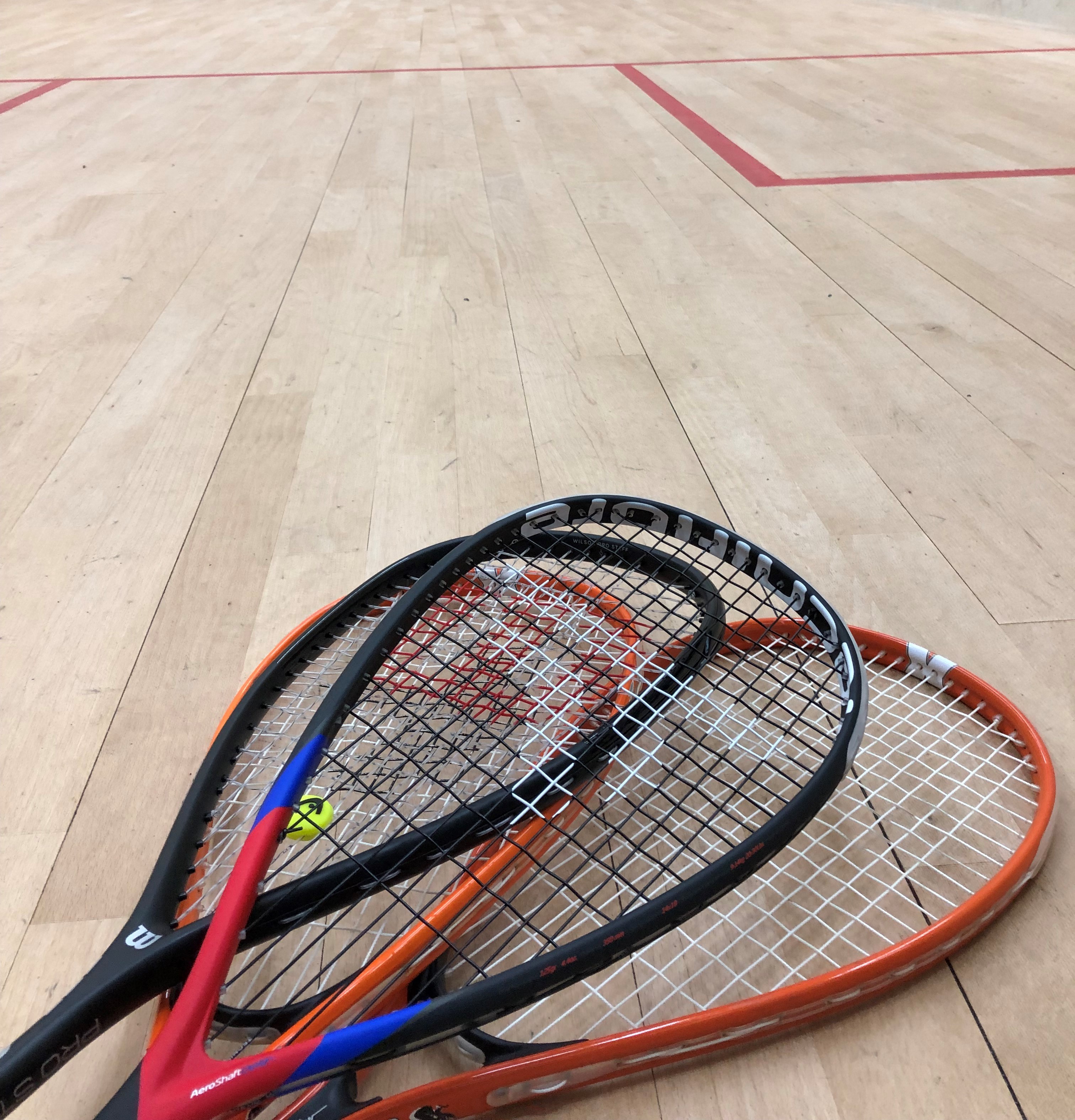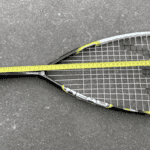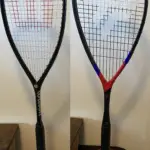This post may contain affiliate links.

Each year there are a lot of newly produced squash rackets that make use of the newest technologies. Does this mean the used materials make my racket also more durable or do squash rackets only last one year?
Squash rackets usually last 3 years for intermediate usage (3 times a week) while restrung once a month. Durability is heavily dependent on the usage, used materials, and storing conditions.
If you want to jump directly to the overview of factors that impact the durability and how to improve it, by all means, go ahead and check out this table.
Factors that impact the durability of your squash racket
Despite the fact that the average lifespan is around 3 years, if you focus on that number alone, you are missing the point. The factors that impact durability heavily influence that number. Thus let’s dive into the factors that determine durability :
- Usage – Frequent usage will decrease the lifespan of your squash racket, due to the faster wear and tear. Every time you hit the ball, the frame absorbs the impact of the shot. From a logical point of view, more impact on the racket will result in a faster wear and tear. However, this logical reasoning does not explain why some professional players use their rackets for many more years. First of all, they seem to increase the lifespan because they take good care of their equipment, most importantly their racket. Another reason is because they have mastered the handling of their racket and therefore reduce the impact by optimally hitting the ball. This allows them to use the racket for years to come.
- Frame material – Higher quality materials will generally last longer and thus increase the lifespan of your racket. Composite materials are considered of the greatest quality. According to market research
 , four out of five rackets are made of composite materials (carbon fiber or titanium). Another frequently used material is aluminum, which is heavier than rackets made of composite materials. While wooden squash rackets used to be the prevailing material, they have almost disappeared from the squash courts. Overall, carbon fiber-based rackets offer the best durability because it is lightweight and high in strength. Other reasons composite rackets consist of 80% of the annual production are the improved weight distribution and shock absorption qualities.
, four out of five rackets are made of composite materials (carbon fiber or titanium). Another frequently used material is aluminum, which is heavier than rackets made of composite materials. While wooden squash rackets used to be the prevailing material, they have almost disappeared from the squash courts. Overall, carbon fiber-based rackets offer the best durability because it is lightweight and high in strength. Other reasons composite rackets consist of 80% of the annual production are the improved weight distribution and shock absorption qualities. - Type of racket – Squash racket are either classified as closed throat/classic or open throat/teardrop. Closed throat rackets consist of a smaller surface, making the vertical string length shorter. Teardrop rackets consist of a larger surface, resulting in larger vertical strings. While both types have their benefits, when focussing on durability there is an important aspect to take into consideration. The length of the strings determine the amount of stress placed on the strings while hitting the ball. Longer strings result in more stress and easier snapping of the strings. If your string breaks while playing, it has the potential to warp your racket. This makes a teardrop racket a less durable option.
- Type of strings – Since rackets are already stringed when purchased, you might not even consider that not all strings are created equal. Despite the fact that several brands sell their own strings, the main difference is in used materials. Strings made of softer materials break more easily, thus increase the risk of warping your racket while playing. Strings made from stronger materials are therefore more durable. Most squash strings are made of a multifilament construction, meaning the string is made up of several components, such as nylon, polyester, rayon, kevlar, titanium, or carbon. According to Ashaway
 , one of the main manufacturers of squash strings, the demand for new synthetic string combinations will rise in order to create thicker, more durable strings.
, one of the main manufacturers of squash strings, the demand for new synthetic string combinations will rise in order to create thicker, more durable strings. - Restring frequency – It is not only a matter of choosing a suitable type of string and have start with the correct string tension, but you want to make sure you can keep relying on the same accuracy of your racket. Just as with tyres, you need to frequently make sure the pressure and condition of the tyres are acceptable. While it seems suboptimal to change tyres in a preventive manner, you don’t want to run the risk of getting a flat tyre at full speed and crash. In this case the cost of additonal change of tyres should be less than the cost to repair the damaged car. The same holds for your strings! When the condition of your strings are unacceptable, the strings can break while playing and potentially warp your racket. The frequency with which you will restring your racket will improve the durability of the racket. Therefore the recommedation is to restring your racket once per month.
- Storage conditions – One aspect that might often be overlooked is the storage of your racket. Before you leave your squash equipment in your car or in a random part of the house, hold on! Even something as small as storing near a window can definitely impact the durability of your racket. Exposure to cold temperatures can result in breaking the strings, whereas exposure to heat can loosen the strings and warp the frame of the racket. Therefore both cold and heat can negatively impact the durability.
- Damage – Finally any damage while hitting/falling can obviously impair the durability of your racket. Hitting the wall with your racket can severely warp the shape of the frame and eventually ruin your racket. Besides trying to avoid smashing your racket against the walls or floor, there are several protective measures available. Bumper guard (plastic bumper) and protection tape both have the function to protect the head of your racket. Grommet strips on the other hand mainly protect your strings (from direct contact with the frame and breaking the strings).
How to increase the durability of your squash racket
- Restring your racket once a month (if you play 3 times a week)
- Use a frame made of a composite material (preferably carbon fiber)
- Use closed throat rackets since they have a lower risk of string snapping
- Make sure the strings of your racket are not too tight (high tension)
- Use good quality strings that are not too soft and are also thicker (lower gauge)
- Store your racket dry and cool at room temperature (15-25 °C / 59-77 °F)
- Use a squash bag with cooling pads
- Use a bumper guard, grommet strips or protection tape to protect the frame of your racket
Overview
| Factor | How to improve durability |
| Usage | Adjust the restring frequency based upon the usage |
| Frame Material | Composite material frame |
| Type of racket | Use a closed throat racket |
| Type of strings | Use thicker (lower gauge) good synthetic strings |
| Restring frequency | Restring once a month (based on usage of 3 times a week) |
| Storage conditions | Stored dry and cool at room temperature Use a squash bag with cooling pads |
| Damage | Use of bumper guards, grommet strips, or protection strip |





